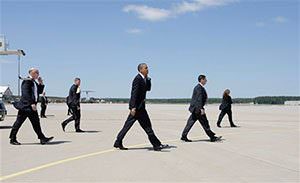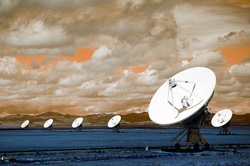20 Years After the L.A. Riots and Nothing Has Changed
The killing of Trayvon Martin is a reminder of the racial divide poisoning American life, which has resisted all attempts to bridge it, even after the country elected its first African-American president.
LOS ANGELES — The killing of Trayvon Martin is a reminder of the racial divide poisoning American life, which has resisted all attempts to bridge it, even after the country elected its first African-American president.
I write this on the 20th anniversary of the Los Angeles riots, a multiracial affair. It’s been 17 years since the O.J. Simpson murder trial, which further showed the antipathy between whites and blacks.
I covered those events for the Los Angeles Times. The riots, in particular, stick in my mind. I remember being at the First AME Church, a center of Los Angeles’ black community, and walking toward a nearby boulevard where young black men were battling Los Angeles Police Department officers. Church members, who knew me, grabbed my arms and led me back to AME, one of them saying, “This is no time for journalistic heroics.” I sneaked back and watched the battle. I also saw men from the church and Latino residents of nearby apartments fight the rioters’ fires, with no help from the city fire department, black and brown hands together around garden hoses. I drove through a city aflame to the paper downtown and then home, returning to the fires and rubble early the next morning.
Nor will I forget the challenge of reporting on the O.J. trial and a criminal justice system that was stacked against defendants, except for one as rich as Simpson. Each day, I watched from the courthouse as lawyers, witnesses, reporters and the famous defendant took part in a drama that plumbed the depths of how Americans feel about race.
My memories have been revived by Martin’s death and the hate crimes in Tulsa, Okla., where three African-Americans were killed and two others wounded by a white man and an American Indian who has described himself as white. Simpson was African-American, his victims white, while Martin was African-American and his killer has a white father and a mother of Peruvian descent. African-Americans, Latinos, Asian-Americans and whites all were involved in the Los Angeles riots.
There are differences between these crimes. What the events have in common, in addition to violence, is the way people view them. Whites downplay the racial angle while people of color don’t.
The racial divide in the Martin case was revealed in an April 2-4 USA Today/Gallup poll. Frank Newport, Gallup’s editor in chief, wrote “Blacks are paying much closer attention to the news of the incident; overwhelmingly believe that George Zimmerman, the individual who shot Martin, is guilty of a crime; believe that racial bias was a major factor in the events leading up to the shooting; and believe that Zimmerman would already have been arrested had the victim been white, not black.”
A total of 73 percent of blacks surveyed by Gallup (before Zimmerman was charged) said he would have been arrested if Martin had been white. Only 35 percent of nonblacks believed that way (Latinos are included in the nonblack category, Gallup told the website Salon). A similar proportion of blacks — 72 percent — said racial bias played a major role in the events that led up to the shooting, compared with 31 percent of nonblacks.
Public opinion, Newport said, “reflects the same kind of racial divide found in 1995 surveys asking about the murder trial of O.J. Simpson.” Acknowledging the differences because of the races of Simpson and the victim, Newport said, “both situations, even though 17 years apart, apparently tap into the same deeply felt views of the average black American that the criminal justice system is biased against blacks.”
In the Simpson case, one Gallup poll found that 78 percent of blacks supported the jury that found him not guilty, while only 42 percent of whites agreed.
The ethnic aspects of the Los Angeles riots were more complex because of the city’s multiethnic population.
Most of Los Angeles, especially white Los Angeles, did not expect the uprising, even though tensions had been growing in South Central L.A., an African-American and Latino area.
The riots occurred after the acquittal of police officers accused of beating Rodney King, an African-American motorist. Their trial had been moved to a white suburb, and when the verdict was delivered, violence began, first in South Los Angeles and then extending to other parts of the city. The police department was caught unprepared. The then-chief, Daryl Gates, had long sent his officers into the area where the riots were centered as if they were an occupying army, a major source of racial tension. But when violence broke out, Gates — either by intent or neglect — had no riot plan and, in the first hours, the streets were without police protection.
Although the first violence was by African-Americans — most famously in the televised beating of white truck driver Reginald Denny — it spread. A Rand report said, “this wasn’t a black riot so much as it was a minority riot. … [M]embers of all racial groups were involved in the spreading physical assaults and looting.”
A total of 54 people died, more than 2,300 were injured and property damage amounted to more than $1 billion. More than half those arrested were Latinos. More than half of stores destroyed were owned by Korean-Americans and perhaps a third by Latinos.
Twenty years later, the divide remains. Substantially more Asians, blacks and Latinos than whites believe that ethnic groups are getting along badly, according to a recent poll by Loyola Marymount University’s Leavey Center for the Study of Los Angeles. More blacks, Latinos and Asian-Americans than whites believe their neighborhoods are less safe than in the past. They also have a more negative view of race relations than do whites.
The riots and the O.J. Simpson trial occurred before instant social media and just as 24-hour cable news was beginning to exert its power. At the time, we thought communications were fast, but compared with today, news traveled slowly and rabble-rousing nuts didn’t have the Internet to spew their venom. And although handguns were plentiful, the idea of a “Stand Your Ground” law, giving people great latitude to shoot in self-defense, was just a gun lobby dream instead of the reality in 25 states, as it is now.
Today, multiracial cities and towns are becoming more common, presenting other parts of the country with the complex ethnic tensions long familiar to Los Angeles. This is a big change in American life.
Many Americans thought we had overcome racial hatred because we elected a black president and we’re more accepting of interracial marriage and children of mixed race. But with racist gunslingers inspired by their Facebook and Twitter “friends,” emboldened by permissive gun laws and hating the increasing racial diversity of America, nothing has changed.
Your support matters…Independent journalism is under threat and overshadowed by heavily funded mainstream media.
You can help level the playing field. Become a member.
Your tax-deductible contribution keeps us digging beneath the headlines to give you thought-provoking, investigative reporting and analysis that unearths what's really happening- without compromise.
Give today to support our courageous, independent journalists.





You need to be a supporter to comment.
There are currently no responses to this article.
Be the first to respond.